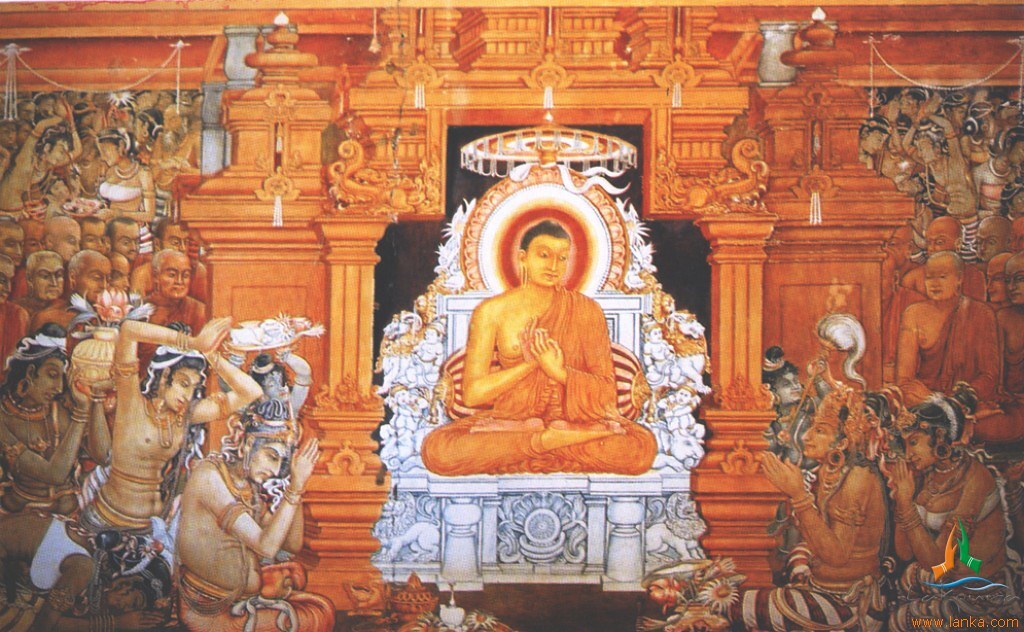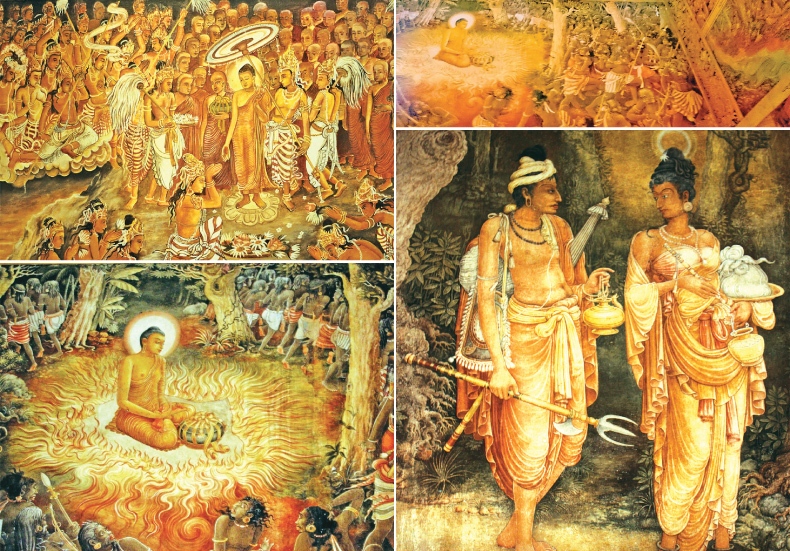Kelaniya Temple
Kelaniya Raja Maha Vihara, also known as Kelaniya Temple, is a major Buddhist temple located in Kelaniya, Sri Lanka, approximately 7 miles from Colombo. The temple’s chief monk is respected Professor Kollupitiye Mahinda Sangharakkhitha Thera. Buddhists believe that the temple was mostly sanctified during the Lord Buddha’s third and final visit to Sri Lanka, eight years after his enlightenment. As a result, its history would have dated back to 500 BCE.
The temple is also known for its portrait of the reclining Gautama Buddha and drawings by indigenous artist Solias Mendis depicting significant events in the Buddha’s history, the history of Buddhism in Sri Lanka, and the Jataka legends. Every January, the Duruthu Maha Perehera parade takes place. The temple contains an 18-foot stone statue of the Bodhisattva Avalokitesvara.
History
Following the arrival of Arahat Mahinda in 307 BC, Prince Uttiya, brother of King Devanampiyatissa, renovated Kelaniya Temple, which was believed to have been built prior to the chronologically recorded history of Sri Lanka (since 543 B.C). According to the Mahawansa, the vihara was renovated for the first time by King Devanampiyatissa’s brother Uttiya. There, Prince Uttiya also built the first Buddhist monks’ residential quarters (Sanghawasa)
The ancient temple was repeatedly destroyed by Dravidian invaders from Southern India. The temple had been rebuilt several times. The Portuguese destroyed the medieval temple in 1510, but King Kirthi Sri Rajasingha rebuilt it in 1967. Under the patronage of philanthropist Mrs. Helena Wijewardene, the New Temple was begun in 1927 and completed in 1946.
3rd and final visit of the Buddha to Sri Lanka
Kelaniya Temple, located on the banks of the Kelaniya River, is one of Sri Lanka’s most sacred sites. It is believed that Buddha, along with 500 Arahats (Supremely Enlightened Beings), visited Kelaniya on the Wesek day of the Buddhist Era 2531 and taught the Dhamma, the Buddhist doctrine, to the island’s inhabitants. Because of Buddha’s timely visit to the island, an impending war between two kings named Chulodara and Mahodara over a jewel-encrusted throne was averted. After Buddha preached the doctrine on the disputed throne offered to him, the two kings established lasting peace. Since then, the great stupa built on the throne’s site has been known as Kelaniya Raja Maha Vihara.

Buddhists believe the temple was hallowed during the Buddha’s third and final visit to Sri Lanka.
Duruthu Perahera & Festival
Every year on the pre-full moon day of January, the ritual “Duruthu Perahera” is performed in this ancient temple (Duruthu Month.) Thousands of people from all over the country, as well as hundreds of international visitors, are on their way to the Kelaniya raja maha vihara temple on this day to see this amazing sight. Today, all of the roads around Kelaniya appear to connect to Kelaniya and nothing else.
The procession itself is a ceremony that represents the country’s age-old religious practices and rituals. It demonstrates the region’s ancient customs and cultural heritage. It shows the world the centuries-old indigenous songs, folk music, syncopated dance styles, and drum beats that have evolved on the island around Buddhism and Buddhist traditions.
This magnificent festival, popularly known as Kelani Perahera, was inaugurated for the first time in 1927.
Paintings of Kelaniya Temple
Two chambers house the Kandyan era paintings that are still in good condition. These paintings depict the Jataka Stories, which were created to inspire compassion. A literary depiction of Buddha’s battle against the defiling factors is also displayed on the wall.
Soliyas Mendis’s beautiful modern paintings, created between 1927 and 1946, depict major events in Sri Lanka’s Buddhist history. Among the panels of paintings are King Devanmpiyatissa donating the Mahamegha park to Arahat Mahinda; a congregation of monks inscribing Tripitaka, the Buddhist doctrine; an Indian scholar monk presenting Visuddhimagga, the Buddhist doctrine commentaries, to the Sangharaja of Maha Vihara; the arrival of Buddhist nun Theri Sangamitta; and the arrival of Prince Danta and Princess Hem.
The navagrahayo, or planetary gods, the nine planets of oriental astrology, and the twelve zodiacal signs, or Rashis, are depicted on the ceiling.
